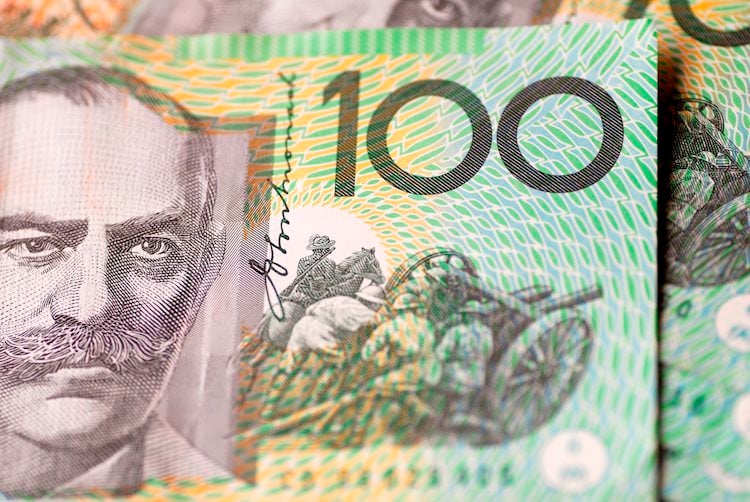- AUD/USD experienced a slight drop, adjusting to 0.67466 on Wednesday.
- The persistent hawkish views of the RBA keep backing the Aussie versus its peers.
- Dovish bets on the Fed weaken the USD.
On Wednesday, the AUD/USD is seeing a slight decline as traders digest the nearly 2% rally from the last sessions. The discourse on monetary policy divergence between the Federal Reserve (Fed), considering a less aggressive approach toward interest rates, and the unwavering position of the Reserve Bank of Australia (RBA) remains the mover of the pair, which put the Aussie ahead of the Greenback.
Despite the mixed Australian economic outlook and the RBA’s hawkish stance driven by high inflation, markets are projecting only a 25-basis-point easing for 2024, maintaining some support for the Aussie.
Daily digest market movers: Aussie’s rally tempered, softer stance by Fed opens the upside
- Softening US labor market data suggests that the Fed may adopt a less aggressive stance, leading to a potential weakening of the USD.
- In addition, the July Federal Open Market Committee (FOMC) Minutes showed that most of the participants were open to a September cut, which adds ammunition to the argument that the Fed will turn dovish at its next meeting.
- On the other hand, the RBA has clearly mentioned that the bank is not considering cuts for the moment, and this divergence is pushing the pair upwards.
- However, incoming data from both countries will continue to guide the pair’s trajectory.
- Markets are seeing high odds of a 100 bps cut by the Fed by year-end, while investors see little probability of a 25 bps cut by the RBA.
AUD/USD technical outlook: AUD/USD uptrend persists but with lower momentum
Technical analysis suggests that the AUD/USD pair has maintained its upward trajectory over the last few sessions. The Relative Strength Index (RSI), which indicates market momentum, has risen near the 70 benchmark. This hints at overbought conditions in recent sessions.
Additionally, the Moving Average Convergence Divergence (MACD) indicator confirms this bullish tone with the rise of green bars, an indication of prevailing bullish sentiment.
Looking ahead, the pair is likely to encounter resistance around the 0.6750 level. For any significant push through this level, traders should monitor volume and RSI closely. Supports are seen within the 0.6700-0.6650 zone.
RBA FAQs
The Reserve Bank of Australia (RBA) sets interest rates and manages monetary policy for Australia. Decisions are made by a board of governors at 11 meetings a year and ad hoc emergency meetings as required. The RBA’s primary mandate is to maintain price stability, which means an inflation rate of 2-3%, but also “..to contribute to the stability of the currency, full employment, and the economic prosperity and welfare of the Australian people.” Its main tool for achieving this is by raising or lowering interest rates. Relatively high interest rates will strengthen the Australian Dollar (AUD) and vice versa. Other RBA tools include quantitative easing and tightening.
While inflation had always traditionally been thought of as a negative factor for currencies since it lowers the value of money in general, the opposite has actually been the case in modern times with the relaxation of cross-border capital controls. Moderately higher inflation now tends to lead central banks to put up their interest rates, which in turn has the effect of attracting more capital inflows from global investors seeking a lucrative place to keep their money. This increases demand for the local currency, which in the case of Australia is the Aussie Dollar.
Macroeconomic data gauges the health of an economy and can have an impact on the value of its currency. Investors prefer to invest their capital in economies that are safe and growing rather than precarious and shrinking. Greater capital inflows increase the aggregate demand and value of the domestic currency. Classic indicators, such as GDP, Manufacturing and Services PMIs, employment, and consumer sentiment surveys can influence AUD. A strong economy may encourage the Reserve Bank of Australia to put up interest rates, also supporting AUD.
Quantitative Easing (QE) is a tool used in extreme situations when lowering interest rates is not enough to restore the flow of credit in the economy. QE is the process by which the Reserve Bank of Australia (RBA) prints Australian Dollars (AUD) for the purpose of buying assets – usually government or corporate bonds – from financial institutions, thereby providing them with much-needed liquidity. QE usually results in a weaker AUD.
Quantitative tightening (QT) is the reverse of QE. It is undertaken after QE when an economic recovery is underway and inflation starts rising. Whilst in QE the Reserve Bank of Australia (RBA) purchases government and corporate bonds from financial institutions to provide them with liquidity, in QT the RBA stops buying more assets, and stops reinvesting the principal maturing on the bonds it already holds. It would be positive (or bullish) for the Australian Dollar.
